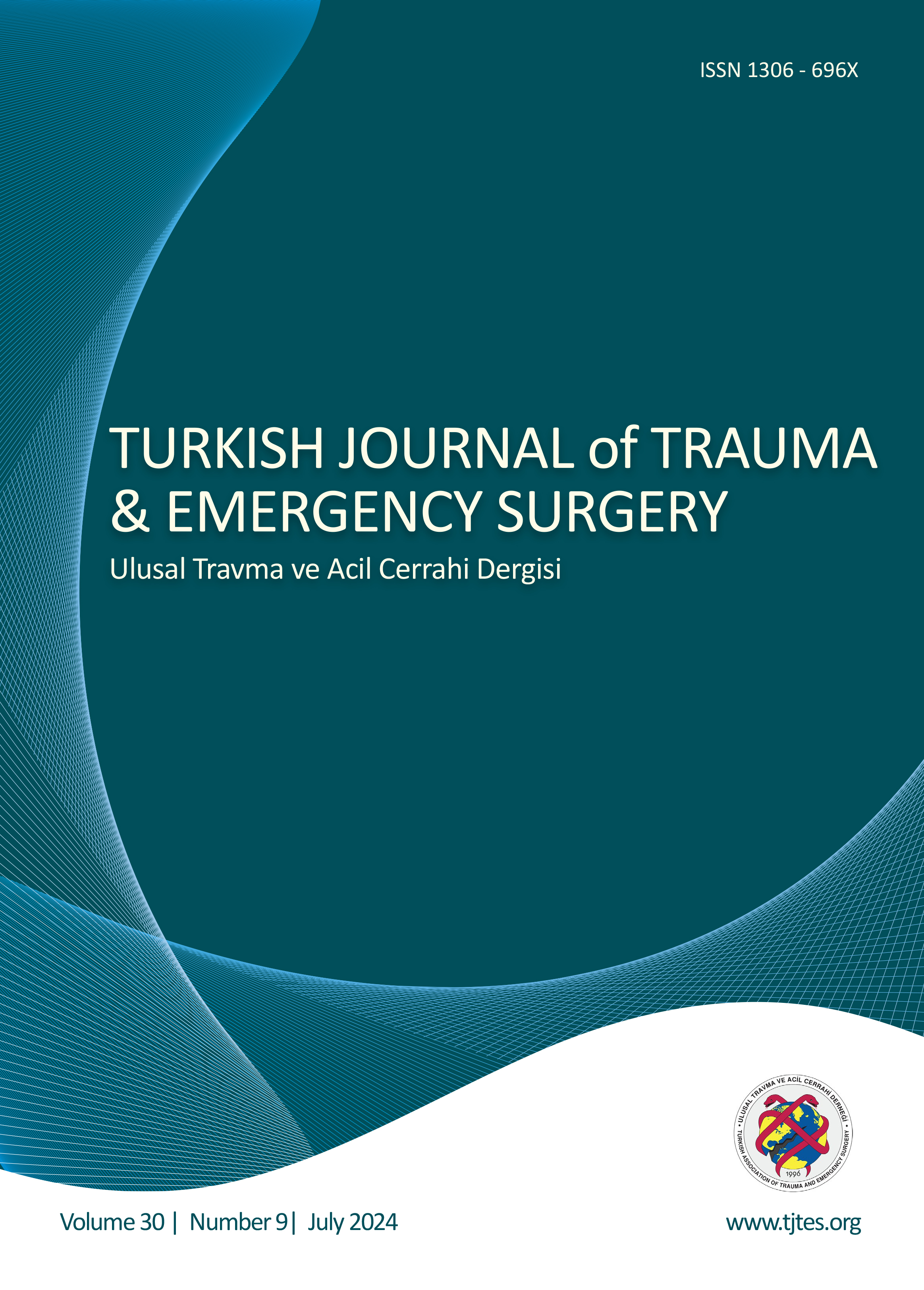Hızlı Arama
Yaşlılarda distal radius kırıklarının konservatif tedavisinde iki immobilizasyon yönteminin radyolojik karşılaştırılması: Tekli şeker maşası ateli ile uzun kol alçısının etkinliği benzerdir
Ali Engin Daştan1, Arman Vahabi1, Kadir Yağmuroğlu1, Yusuf Kerem Limon2, Aytek Hüseyin Çeliksöz3, Okan Tezgel4, Levent Kucuk5, Erhan Coskunol1, Kemal Aktuglu11Ege Üniversitesi Tıp Fakültesi Hastanesi, Ortopedi ve Travmatoloji Anabilim Dalı, İzmir, Türkiye2Akdeniz Üniversitesi Tıp Fakültesi, Radyoloji Anabilim Dalı, Antalya, Türkiye
3Eskişehir Şehir Hastanesi, Ortopedi ve Travmatoloji Kliniği, Eskisehir, Türkiye
4Medipol Bahçelievler Hastanesi, Ortopedi ve Travmatoloji Kliniği, Istanbul, Türkiye
5Medicana International Hastanesi, Ortopedi ve Travmatoloji Kliniği, Izmir, Türkiye
AMAÇ: Bu çalışmada geriatrik popülasyonda distal radius kırıklarının cerrahiolmayan tedavisinde uzun kol alçısı (UKA) ve tekli şeker maşası atelinin (TŞMA) etkinliğini karşılaştırmak amaçlandı.
GEREÇ VE YÖNTEM: Acil servis (AS) ortopedi ve travmatoloji bölümünde konsülte edilen hastalar, beş yıllık bir süre boyunca üçüncü basamak bir üniversite hastanesinin elektronik arşivleri kullanılarak incelendi. Çalışmaya, redüksiyon gerektiren, başarılı kapalı redüksiyon geçiren ve en az altı hafta röntgen takibi olan 65 yaş ve üzeri distal radius kırığı olan hastalar dahil edildi. Hastalar immobilizasyon yöntemine göre iki gruba ayrıldı: TŞMA grubu (n=88) ve UKA grubu (n=31). Hastaların AS'de redüksiyondan sonra ve 1., 2., 4. ve 6. haftalarda çekilen radyografileri değerlendirildi. Her ziyarette radyografilerde radyal yükseklik, radyal eğim, volar eğim ve ulnar varyans ölçüldü. Delta değeri, altıncı haftada alınan ölçümden ilk redüksiyon sonrası radyografideki ölçüm çıkarılarak hesaplandı. Elde edilen veriler daha sonra iki grup arasında karşılaştırıldı.
BULGULAR: Toplam 119 hasta (93 kadın, 26 erkek; ortalama yaş: 72.9±7.3 yıl; aralık, 65 ila 90 yıl) dahil edildi. Ortalama yaş grup 1'de 74.6∓7.6 ve grup 2'de 72.3∓7.2 idi (p=0.135). Grup 1 26 kadın ve 5 erkekten oluşuyordu; grup 2 ise 67 kadın, 21 erkekti (p=0.52). Redüksiyon sonrası volar tilt (p=0.005), 1. hafta volar tilt (p=0.020), redüksiyon sonrası ulnar varyans (p=0.044), 1. hafta ulnar varyans (p=0.037), 2. hafta ulnar varyans (p=0.027) gruplar arasında istatistiksel olarak anlamlı fark gösterdi. Delta değerleri de dahil olmak üzere diğer radyolojik parametrelerde istatistiksel olarak anlamlı bir fark saptanmadı. Grup 1'deki iki hastaya ve grup 2'deki 7 hastaya tekrar müdahale gerekmişti (p=1).
SONUÇ: Geriatrik distal radius kırıklarının konservatif tedavisinde TŞMA, UKA kadar etkili bir immobilizasyon tekniğidir.
Anahtar Kelimeler: Geriatrik distal radius kırığı, uzun kol alçısı; sugar tong ateli.
Radiological comparison of two immobilization methods in the non-surgical treatment of distal radius fractures in the elderly: Single sugar-tong splint shows similar efficacy to long-arm cast
Ali Engin Daştan1, Arman Vahabi1, Kadir Yağmuroğlu1, Yusuf Kerem Limon2, Aytek Hüseyin Çeliksöz3, Okan Tezgel4, Levent Kucuk5, Erhan Coskunol1, Kemal Aktuglu11Department of Orthopedics and Traumatology, Ege University University School of Medicine, Bornova, Izmir-Türkiye2Department of Radiology, Akdeniz University School of Medicine, Antalya-Türkiye
3Department of Orthopedics and Traumatology, Eskisehir City Hospital, Eskisehir-Türkiye
4Department of Orthopedics and Traumatology, Medipol Bahçelievler Hospital, Istanbul-Türkiye
5Department of Orthopedics and Traumatology, Medicana International Hospital, Izmir-Türkiye
BACKGROUND: This study aims to compare the effectiveness of the long-arm cast (LAC) and the single sugar-tong splint (SSTS) in the non-operative treatment of distal radius fractures in the geriatric population.
METHODS: Patients consulted at the Orthopedics and Traumatology Department within the Emergency Department (ED) were reviewed through the electronic archives of a tertiary university hospital over a five-year period. The study included patients aged 65 years and older with a distal radius fracture who required reduction, had successful closed reduction, and had at least six weeks of X-ray follow-up. The patients were divided into two groups based on the immobilization method: the SSTS group (n=88) and the LAC group (n=31). The patients' radiographs taken after reduction in the ED, as well as at the 1st, 2nd, 4th, and 6th weeks, were evaluated. Radial height, radial inclination, volar tilt, and ulnar variance were measured on the radiographs at each visit. The delta value was calculated by subtracting the measurement on the first post-reduction radiograph from the measurement taken at the sixth week. The data obtained were then compared between the two groups.
RESULTS: A total of 119 patients (93 females, 26 males, mean age: 72.9±7.3 years; range, 65 to 90 years) were included. The mean age was 74.6±7.6 in Group 1 and 72.3±7.2 in Group 2 (p=0.135). Group 1 consisted of 26 females and 5 males; Group 2 included 67 females and 21 males (p=0.52). Statistically significant differences were observed in post-reduction volar tilt (p=0.005), first week volar tilt (p=0.020), post-reduction ulnar variance (p=0.044), first week ulnar variance (p=0.037), and second week ulnar variance (p=0.027) between the groups. No statistically significant differences were detected in other radiological parameters, including delta values. Two patients in Group 1 and seven patients in Group 2 required secondary intervention (p=1).
CONCLUSION: In the non-operative management of geriatric distal radius fractures, the SSTS is an immobilization technique that is as effective as the LAC.
Keywords: Geriatric distal radius fracture, long-arm cast; single sugar-tong splint.
Makale Dili: İngilizce





